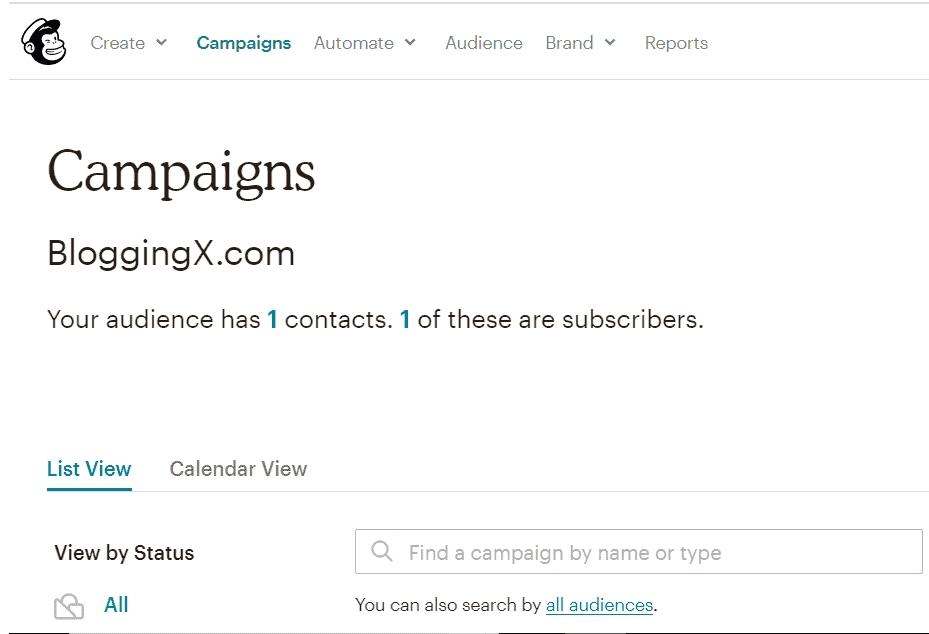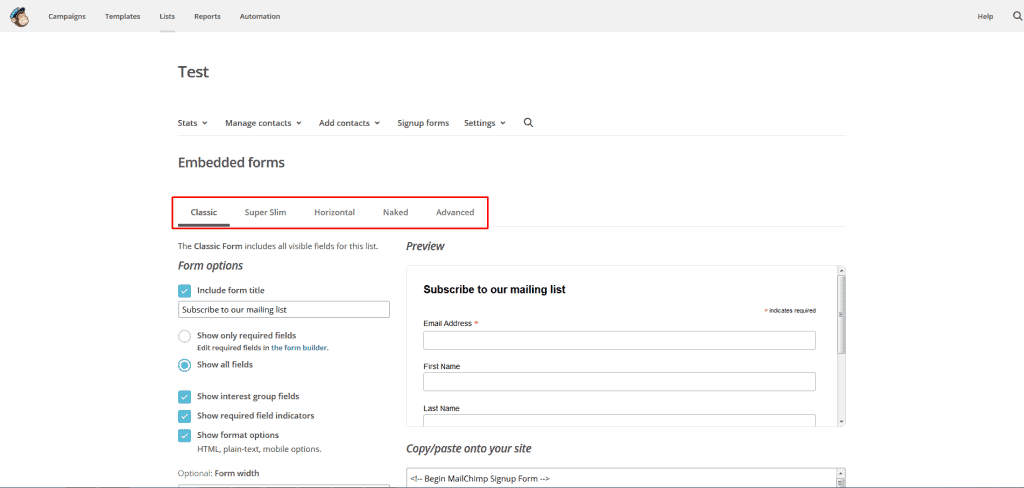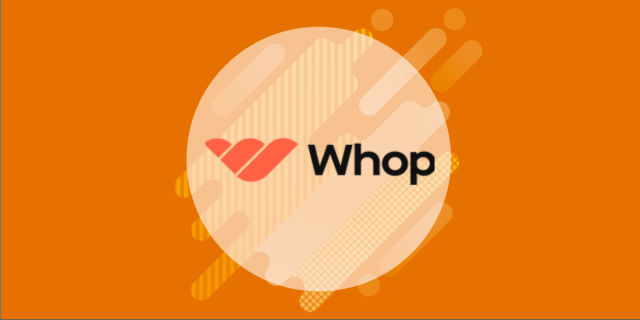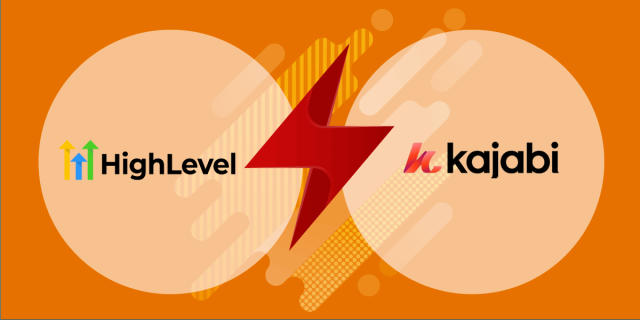Looking for the perfect email marketing tool?
Need to choose between Moosend and Mailchimp?
I’ve got you covered. In this article, I’ll compare these popular platforms so you can pick the right one for your business.
| Features | Moosend | MailChimp |
| Starting pricing | $9/mo (only one plan) | $13.37/mo (beginner plan) |
| Free plan | No | No |
| Mobile app | It lacks a mobile app | MailChimp has iOS and Android apps – Click here to download |
Quick decision
What I like about Moosend vs. Mailchimp? 👍
- Intuitive interface: You’ll appreciate Moosend’s modern design, making it easy to create mailing lists, landing pages, reports, and set up automation workflows.
- Advanced automation: You’ll love the sophisticated automation workflow builder with built-in templates, allowing you to create complex sequences effortlessly.
- Superior deliverability: Moosend boasts a high deliverability rate of 98%, ensuring your emails reach their intended recipients and don’t end up in spam folders.
- Budget-friendly pricing: Moosend offers competitive pricing compared to Mailchimp, making it an attractive option for cost-conscious marketers looking to scale their email campaigns.
What I like about Mailchimp vs. Moosend? 👍
- Extensive integrations: As an established tool, Mailchimp offers a wide range of native integrations with other platforms, making it ideal for businesses with complex tech stacks.
- Built-in CRM functionality: Manage your customer relationships and engagements efficiently using Mailchimp’s comprehensive CRM features.
- Multilingual capabilities: Benefit from translation into 50 languages, perfect for international campaigns and global audience targeting.
- Straightforward segmentation: You’ll find audience segmentation and list control intuitive, allowing for highly targeted campaigns that drive better results.
Upfront bottomline ✨
Not sure which email tool to pick between Moosend and Mailchimp?
If you want easy-to-use automation features and wallet-friendly pricing, go with Moosend. Moosend wins the hearts of small businesses and budget-conscious marketers looking for advanced automation, modern design, and better bang for their buck.
Need tons of integrations and language options? Mailchimp might be your answer. Mailchimp is the go-to for businesses that need to connect with lots of other tools, want built-in CRM features, and prefer a well-established platform with more support resources.
Both platforms have their strong points, so match them up with what your business actually needs before deciding.
Overview

Founded in 2013, Moosend emphasizes ease of use and affordability, making it a strong competitor to MailChimp.
It offers a free trial for 1,000 subscribers.
It also boasts a feature-rich automation builder comparable to ActiveCampaign and ConvertKit, making it an attractive option for those looking to start for free yet have strong automation capabilities.

Try Moosend Free!
Start your free trial with 1,000 subscribers and unlimited emails today.
Verified

Mailchimp, was founded in 2001.
It is a popular email marketing platform known for its generous free plan for up to 2,000 subscribers.
Also, it offers robust analytics, subscriber management, and campaign assessment tools.
The platform’s affordability, ease of use, and comprehensive features have made it a leading player in the email marketing arena.

Get Started with Mailchimp!
Access powerful email marketing tools with Mailchimp's free 30-day trial.
Verified
Interface

As seen above, Moosend’s dashboard and interface are clear, simple to understand, and use. You can easily access features like campaigns, lead generation, mailing lists, automation, and reports.
The interface is sleek and modern, and it’s easy to get the hang of it quickly.

Mailchimp’s interface is old-fashioned but easy to comprehend and use.
The main features are clearly accessible and you can get started with your email campaign effortlessly.
First, create your email, then launch and automate your campaign, segment your audience, and then generate insightful reports to learn about the effectiveness of the results.
🏆 Winner: In the Moosend vs Mailchimp battle, my vote goes to Moosend for ease of use as its intuitive interface is better than the old-fashioned one of Mailchimp.
List management
Moosend allows you to manage your lists efficiently and you can start by first importing your subscriber list.

You can import a CSV or Excel file, paste text, or pull in data from Google Contacts or Salesforce.

Next, you can deliver targeted marketing campaigns by segmenting your audience list.
With Moosend you can segment the lists based on the various activities of the subscribers like links they clicked, campaigns opened, their subscription type, etc.
Let’s now look at list management in Mailchimp:

You can use these features to organize your lists neatly.

From your contacts list, you can easily create segments based on specific user actions. This allows you to target your emails more effectively.
🏆 Winner: Mailchimp as it offers a marketing CRM feature that you can use to manage customer engagements. This function is lacking in Moosend.
Email broadcasts and templates
Here’s a quick comparison for context.
| Feature | Moosend | Mailchimp |
|---|---|---|
| Editor type | Drag-and-drop, intuitive, modern UI | Drag-and-drop, established UI |
| Template library | Modern, easy-to-customize templates | Larger template library, more variety |
| Customization | Highly customizable, praised for simplicity | More options, but customization can be more complex |
| Ease of use | Very user-friendly, ideal for beginners | Powerful, but can feel overwhelming due to more features |
| HTML editing | Available for advanced users | Available |
| Mobile responsiveness | Yes | Yes |
Now let’s dive into the details.
Moosend enables you to easily create and deliver a new broadcast campaign to your list.

You can craft the broadcast message select your mailing list and format, select a template, load the text, and schedule the delivery date and time.

In comparison, Mailchimp allows you to create emails, ads, landing pages, postcards, and social posts.

You can pick one or more based on what your campaign needs.
With Moosend, you can create different types of broadcast campaigns like regular, A/B split, repeatable HTML, RSS, and automation campaigns.
Just choose what works for you and use their user-friendly templates to create and launch a targeted campaign that fits your needs.
Now, let’s look at Mailchimp’s broadcasts and templates features:


For your email campaign, you can select from regular, automated, and plain-text options.
In comparison, Moosend offers only a regular campaign option.
🏆 Winner: Mailchimp. It offers more than 100 templates compared to about 40 in Moosend. Also, it comes with advanced email composing abilities like HTML and more.
Automation

Moosend allows you to automate your campaign using criteria such as an abandoned cart, anniversary, change in the custom field, onboarding email sequence, and many more.

You can also craft advanced workflows from scratch using the intuitive builder.
Just set up automation triggers, conditional filters, and actions.
Also offers unique filters like interest-based targeting, weather-triggered upsells, repeat purchase reminders, and other eCommerce related features.
Whether it’s attracting subscribers, boosting sales, or sending timely reminders, you can create automation recipes for almost anything!
👍 In spite of being a relatively newcomer, Moosend became popular because of its very powerful automation workflows functionality. There’s a reason why it’s very popular among e-commerce users.
Now about MailChimp.

Mailchimp also offers a visual builder which they call “customer journeys”.
Some users find it less intuitive for advanced automation needs.
One strength with Mailchimp builder is it allows for highly personalized multi-channel workflows which integrate emails, ads, and even more.
However, Moosend is more focused on advanced triggers and e-commerce focused workflows.
🏆 Winner: Moosend, as it offers a visual automation builder that is lacking in Mailchimp.
A/B testing

Moosend’s A/B testing feature allows you to create two campaigns that you can send immediately or schedule for later delivery.

You can configure your A/B campaign and select the winning version.
Let’s now look at Mailchimp’s A/B testing feature:

What can you test in Mailchimp?
The list includes preheaders and subject lines, “From” name, content such as calls-to-action and visuals, and send time.
🏆 Winner: Mailchimp, as it allows you to test three campaign versions compared to only two in Moosend. In addition, Mailchimp’s Multivariate testing feature lets you test up to 8 campaign variations. This feature is lacking in Moosend.
Forms and landing pages

Moosend offers a variety of form types including modal pop-ups, inline forms, floating bars, and full-page forms.
While it provides numerous templates, customization can be challenging as it requires HTML code editing.

Moosend also allows for easy creation of attractive landing pages, though this feature is not available in the free plan.

In comparison, Mailchimp provides five form options: Classic, super-slim, horizontal, naked, and advanced.

Mailchimp offers landing page templates for purposes such as lead capture, accepting payments, lead generation, growing your list, and promoting your products.

It also offers landing page templates for various purposes such as lead capture and product promotion. Mailchimp’s forms are generally easier to customize and integrate with third-party websites.
🏆 Winner: Overall, while both platforms offer robust form and landing page capabilities, Moosend edges out with additional features to boost landing page visibility and improve Google rankings.
Deliverability
Deliverability is an important factor in deciding the quality of an email marketing solution as it indicates the probability that your messages will land in recipients’ inboxes and not in their spam or trash folders.

A campaign’s deliverability rate is determined by the sender’s reputation and the campaign’s content.
Email reputation company Sender Score has given Moosend a high deliverability score of 98%.
We have conducted an email marketing deliverability test to rate all the leading software solutions. In the test, Mailchimp received an impressive score of 95.45% which means only 4.55% of its emails are rated spam. Moosend was not included in the test though.
🏆 Winner: Moosend as its deliverability score is higher.
Integrations
Moosend integrates with most of the popular eCommerce, cart platforms, ESPs, and marketing platforms. Along with it, it also integrates with Zapier.
On the other hand, Mailchimp has the most integrations; almost all SaaS applications by default integrate with Mailchimp. It also offers webhook and API features that you can use to connect the software with your existing business solutions.
🏆 Winner: Mailchimp as it offers a higher number of native integrations
Support
Moosend as its free plan users also get access to the phone, live chat, and email support.
With Mailchimp, you have to subscribe to the expensive premium plan to access all support channels.
Pricing

Moosend offers the following plans:
- Free trial for 1,000 subscribers and unlimited emails
- Pro plan – $64/mo (for 8,000 subscribers). Save 20% on annual payment
- Moosend+ plan – Custom package with add-ons of your choice
- Enterprise plan – Custom package with premium features
With Mailchimp’s plan, you get email support for the first 30 days and up to 500 contacts.

Their Standard Plan starts at $88.38/mo for 10,000 contacts, and the Premium plan starts at $267.46/mo.
Mailchimp also offers transactional email pricing starting at $20 for a block of 25,000 emails.
🏆 Winner: Tie.
Conclusion
Both Moosend and Mailchimp offer similar core features, including A/B testing, list segmentation, automation, and drag-and-drop editors.
Moosend is the winner for me.
It impressed me with its user interface, automation capabilities, forms and landing pages, deliverability rate, superior support, and competitive pricing. The things that really matter.
Mailchimp stands out for list management, email templates, A/B testing, numerous integrations, etc.
Both platforms provide valuable free plans for small businesses and startups. Choose based on your specific needs and priorities.






